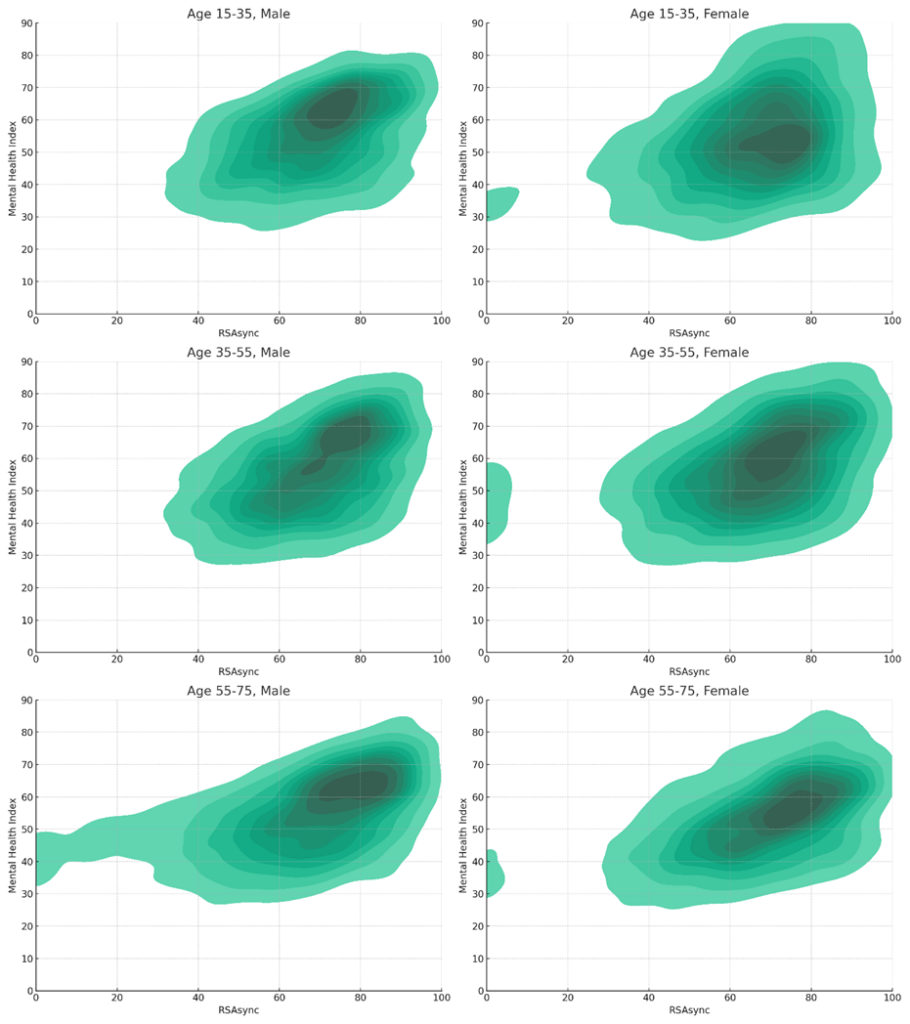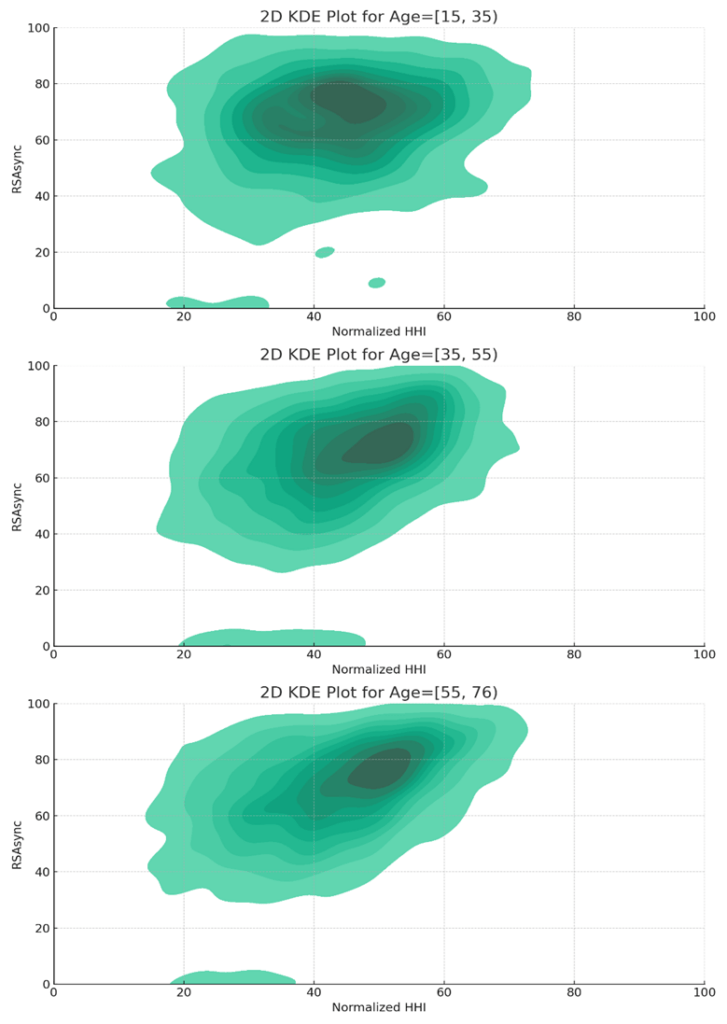1. Overview
Vagus Health proudly introduces two pioneering indexes developed for the systematic monitoring of hormonal balance and mental health: the Hormonal Homeostasis Index (HHI) and the Mental Health Index (MHI). Engineered using AI-based framework and drawing from a wealth of data generated by VAGUS® tests performed on a variety of smartwatches (including Apple, Samsung, Withings and the VAGUS research smartwatch), these indices will add a new kind of non-invasive bio-signal based understanding and approach to hormonal and mental health issues.
2. Our Innovations
The breakthroughs we’ve achieved come from the dynamic, multi-parameter, vagal tone-derived biomarkers. These revolutionary indexes, built on our unique VAGUS® test, offer unparalleled insights to hormonal balance and mental health. They hold the potential to empower individuals, healthcare professionals, and companies operating in the field with unprecedented knowledge and control over these critical aspects of health.
3. Global Accessibility
At Vagus Health, we’re not just about innovation; we’re about making those innovations accessible. Our mission extends to providing these services in regions where healthcare systems may be less developed, and we ensure that our chatbot and AI advice features are available in a multitude of languages.
4. The Science Behind the VAGUS Test
Underpinning our new indexes is the scientific foundation of the VAGUS® test, a component of our BREATHE FLOW app. This test is built on different types of vagal tone derived from the same smartwatch ECG signal, leading to highly accurate pulse and breathing measurements. The scientifically verified method of ECG-derived respiration (EDR) forms the bedrock of this test, further refined by Gustaf Kranck’s innovative approach to blending breathing measurement with other parasympathetic activation signals.
5. AI-Powered Index Development – how it works.
The genesis of our indexes involve harnessing the power of artificial intelligence (AI) in several key stages. This process will be used to continously upgrade the indexes and adjust them according to further research, customer needs and personalized findings:
A. Data Collection and Preprocessing: We commenced by extracting over 52,803 anonymized VAGUS tests from our database, comprising of ECG and other smartwatch sensor data.
B. Feature Extraction: The dataset was anonymized and pruned to highlight the most salient features, making it more manageable for our AI models and enhancing the potential for meaningful findings.
C. Model Training: The first AI agent embarks on learning from this streamlined data, using machine learning algorithms to identify patterns and relationships.
D. Evaluation and Validation: While the first AI agent is training the model, a second AI agent concurrently evaluates its performance using a separate validation dataset, with the aim of mitigating overfitting.
E. Model Improvement and Optimization: If the initial evaluation metrics fall short, a third AI agent steps in to fine-tune the model using hyperparameter tuning, feature selection, and ensemble methods.
F. Testing: The optimized model is subjected to further testing by a fourth AI agent, using a completely new testing dataset. If the model’s performance remains subpar, it loops back to the third AI agent for more improvements.
G. Deployment and Monitoring: Once we’re satisfied with the model’s performance, it’s ready to be deployed and monitored continuously for any required adjustments.
6. Key Features of the Indexes
The indexes are comprised of various biosignals and parameters that accurately reflect the functioning of the autonomic nervous system, including the Vagus nerve. They are known to correlate with hormonal balance and mental health, providing a comprehensive perspective on the user’s overall health.
7. Discoveries and Results
We conducted comprehensive testing of our indexes, leading to fascinating discoveries about for instance the relationship between physical and mental health markers. The following examples highlight some initial findings from the use of these beta-version indexes.
Graph 1: Gender and age-based distribution of the VAGUS® MENTAL HEALTH INDEX (VMHI):

Graph 2: Gender and age based distributions of VAGUS® MENTAL HEALTH INDEX (VMHI) according to RSAsync:
Example finding: RSAsync has good correlation to VMHI for both genders and all ages

Graph 3: Age-based linear graph where the average VAGUS® HORMONAL HOMEOSTASIS INDEX (HHI) Is calculated for different age groups from 15-75.
Example Findings from Graph 3: Hormonal Homeostasis Index is lowest for women in age groups 30-40 and 50-60.

Graph 4: Age based distributions of VAGUS® HORMONAL HOMEOSTASIS INDEX (HHI) compared to the RSAsync index values (a high RSAsync values means and health syncronization between breathing and pulse changes):
Example of finding from graph4: RSAsync has a strong positive correlation to HHI, especially as age increase. When an older person has higher RSAsync, Hormonal Homeostasis improves. The RSAsync is therefore a important target-value for hormonal interventions.

8. Conclusion
The Hormonal Homeostasis Index (HHI) and the Mental Health Index (MHI) developed by Vagus Health adds new important elements to non-medical monitoring and it speeds up the change in how we monitor health. Smartwatches are becoming increasingly common and they will be an important part of the ‘future of health’. By offering users and our B2B clients insights into hormonal- and mental health states, we can help to empower individuals and health providers to take better charge of preventive well-being, thereby enhancing the quality of life globally.
Disclaimer:
We provide information based on current ECG best practice and research methods at the time of delivering the Product. However, due to the advances in research methods, potential issues with the recordings you provide and other factors outside of our control, the ECG and bio signal analysis may contain inaccuracies. We will not be responsible for any inaccuracies or deficiencies in your personal data for any reason which is outside its control.
The Vagus Health apps, analysis, chatbot responses or other data such as index values are not medical devices or what is considered internationally as ‘medical advice’. Users should not use it to alter or initiate medical treatments, medication or instructions given to them by medical doctors or institutions. We always advice to contact a medical professional for any medical conditions.
The Vagus Health products are designed for general health and wellness monitoring only. Not to diagnose diseases.

